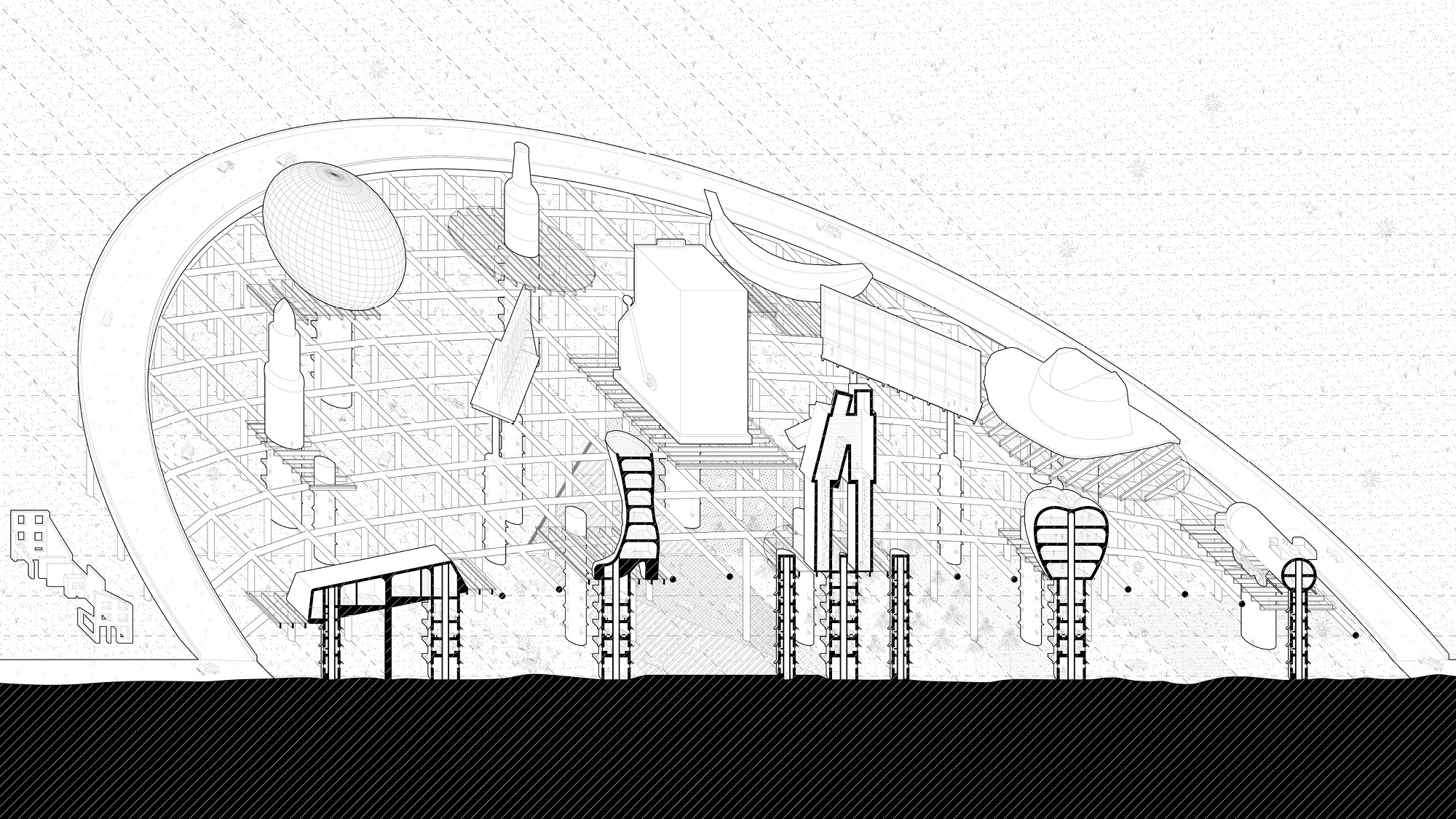cruising rhyolite
an exploration of queer space in the mojave desert
Rhyolite, Nevada is a ghost town situated in the middle of the Mojave Desert. Once the west’s most promising boom town, Rhyolite prospered as a hub for gold mining in the early twentieth century. However, by the year 1924, the town was in utter decay. Since, there have been many attempts to revitalize the once flourishing community – most notably by Fred Schoonmaker and Alfred Parkinson, an interracial gay couple from Reno who sought to carve out a queer refuge for themselves and members of their community.
At the height of anti-gay hysteria during the AIDS crisis, the couple made the remarkable announcement that they would establish Stonewall Park, a gay mecca, in Rhyolite. The plans for Stonewall Park ultimately fell through as legally sanctioned homophobia, retaliation from surrounding conservative communities, and Schoonmaker’s subsequent sickness brought progress to a ceasing halt.
Mainstream historical narrations surrounding Rhyolite centralize its wild west machismo but ignore its queer history. Contrary to popular belief, the founding principles of both communities were, more or less, the same. In the mining beginnings of Rhyolite, there existed “miners of many faiths who prayed and created here out of sight of the greedy.” Similarly, the vision for Stonewall Park was centered around inclusivity and the creation of “a radically queer space free from racist and homophobic protest.”
While tremendous strides for equality have been made during the 21st Century, it still seems as though many members of the LGBTQ+ community are only allowed to play niche roles within mainstream society based on their signifier (butch, fem, campy, real, etc). Reconstructed Rhyolite utilizes architecture at a variety of scales as a means to distort, blur, and superimpose meaning -- wiping away preconceived ideas of what a radically queer society is/appears as.
Long term residents establish this community to break from an oppressive society, to erase preconceived notions of identity, and to embrace radical individualism and free gender expression. Visitors are able to learn the story of the Rhyolite, view the performances of the residents, and leave with a new relationship to gender and sexuality; one that is not influenced by society but constructed by their own free will. This project distorts and warps preconceptions in a means to unlearn. The fantastical forms present in Rhyolite allow learned behavior to wash over its residents and vistiors alike. By devaluing what society tells us to be, “Reconstructed Rhyolite” celebrates queerness and refuses to confine itself to any one criterion.
At the height of anti-gay hysteria during the AIDS crisis, the couple made the remarkable announcement that they would establish Stonewall Park, a gay mecca, in Rhyolite. The plans for Stonewall Park ultimately fell through as legally sanctioned homophobia, retaliation from surrounding conservative communities, and Schoonmaker’s subsequent sickness brought progress to a ceasing halt.
Mainstream historical narrations surrounding Rhyolite centralize its wild west machismo but ignore its queer history. Contrary to popular belief, the founding principles of both communities were, more or less, the same. In the mining beginnings of Rhyolite, there existed “miners of many faiths who prayed and created here out of sight of the greedy.” Similarly, the vision for Stonewall Park was centered around inclusivity and the creation of “a radically queer space free from racist and homophobic protest.”
While tremendous strides for equality have been made during the 21st Century, it still seems as though many members of the LGBTQ+ community are only allowed to play niche roles within mainstream society based on their signifier (butch, fem, campy, real, etc). Reconstructed Rhyolite utilizes architecture at a variety of scales as a means to distort, blur, and superimpose meaning -- wiping away preconceived ideas of what a radically queer society is/appears as.
Long term residents establish this community to break from an oppressive society, to erase preconceived notions of identity, and to embrace radical individualism and free gender expression. Visitors are able to learn the story of the Rhyolite, view the performances of the residents, and leave with a new relationship to gender and sexuality; one that is not influenced by society but constructed by their own free will. This project distorts and warps preconceptions in a means to unlearn. The fantastical forms present in Rhyolite allow learned behavior to wash over its residents and vistiors alike. By devaluing what society tells us to be, “Reconstructed Rhyolite” celebrates queerness and refuses to confine itself to any one criterion.
project information
location: rhyolite, nevada
date: 2021
type: research, urban planning, housing
credits
project team: danielle eke, ananya manian, jacob t. middleton
recognition
UTSOA Design Excellence winner
location: rhyolite, nevada
date: 2021
type: research, urban planning, housing
credits
project team: danielle eke, ananya manian, jacob t. middleton
recognition
UTSOA Design Excellence winner
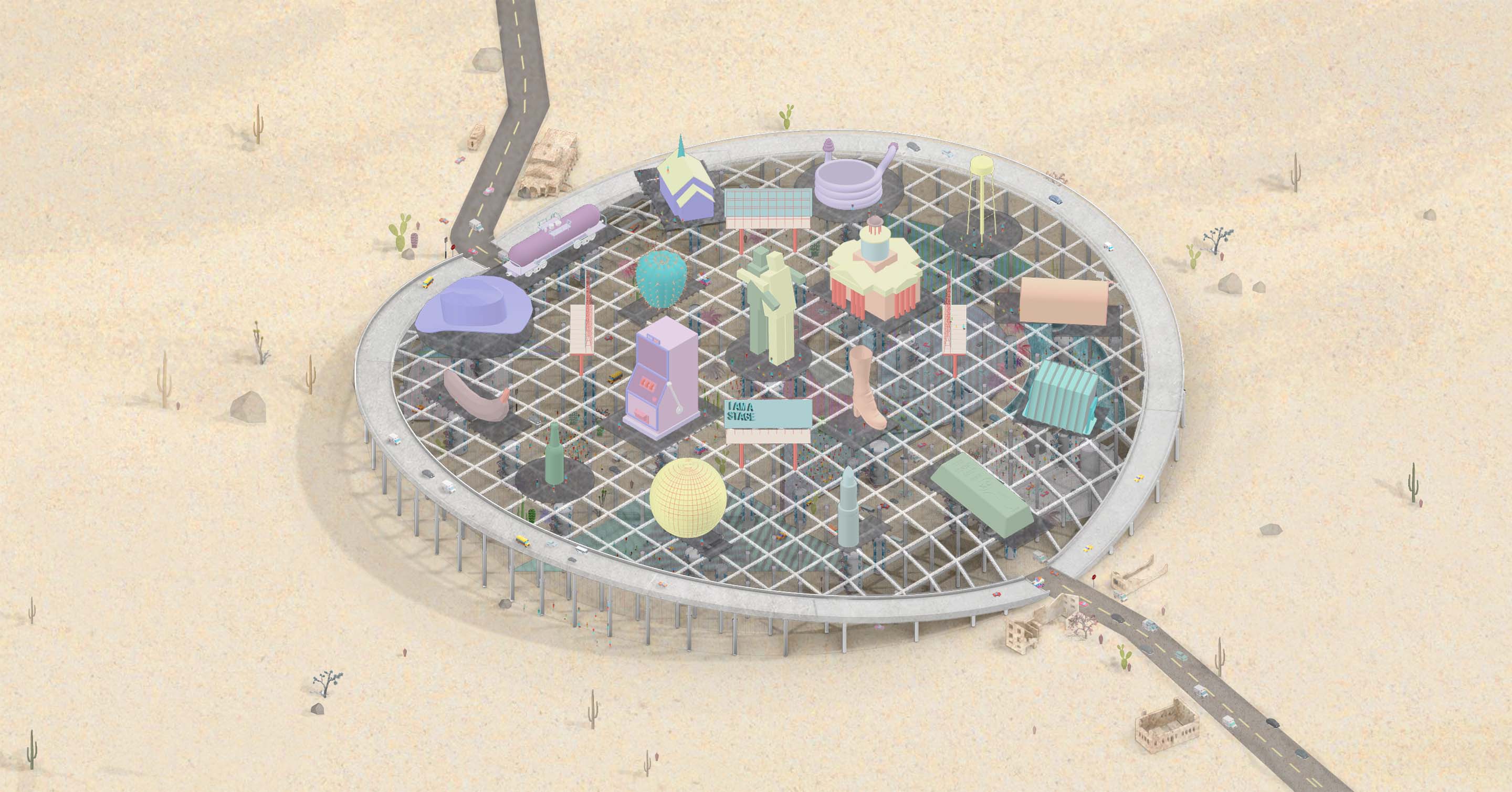
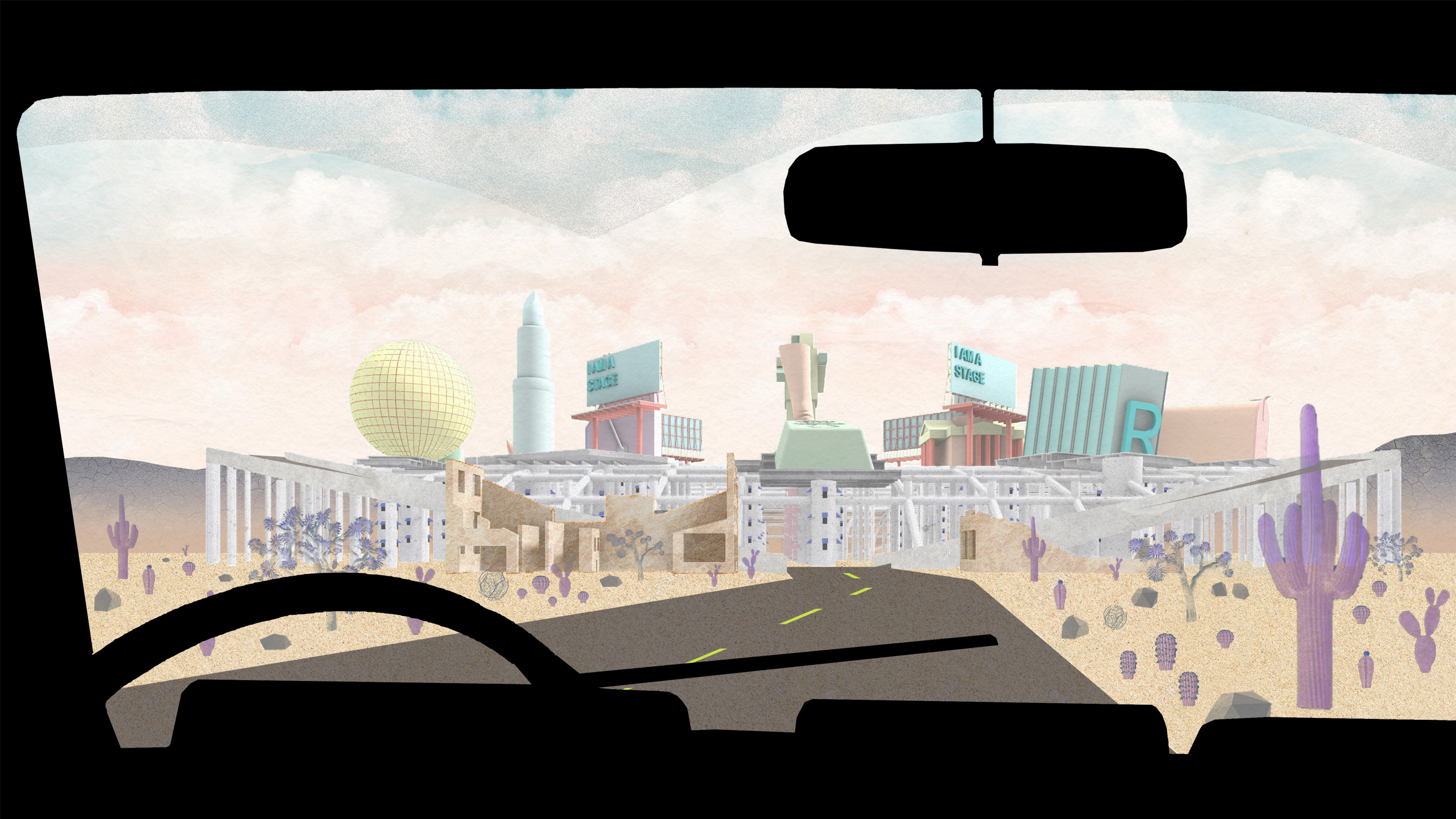
rhyolite appropriates the tourism-driven economy of nevada by using large elevated follies angled towards the highway as a means to attract visitors and produce revenue. much like the iconic architecture of the las vegas strip, these buildings warp scale and use semiotics to convey meaning. both histories of rhyolite are represented and the histories distort into one overlapping narrative to be read from the highway as one circumvents the town.

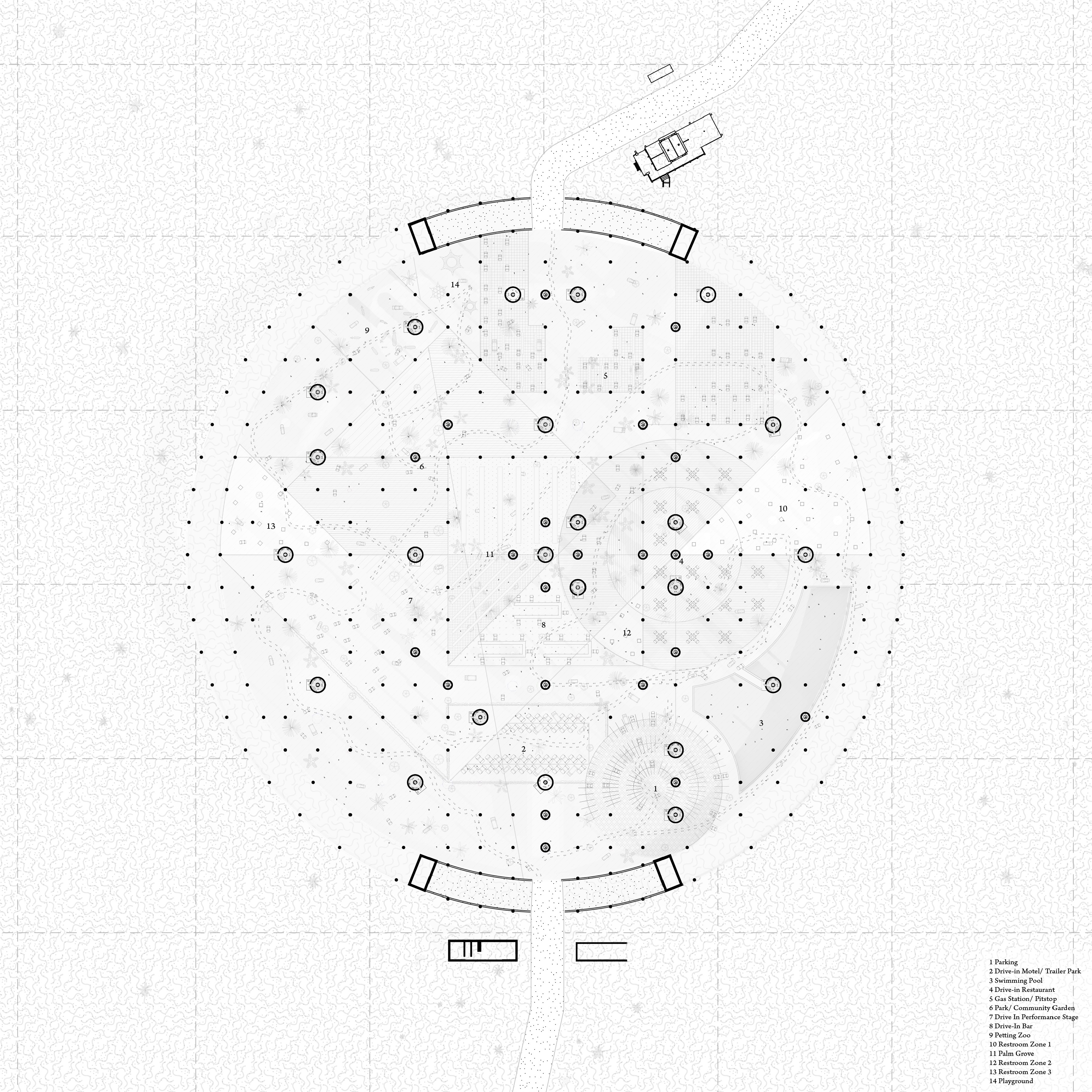

beneath the elevated highway, follies meet the ground by way of a large infrastructural grid. this grid organizes program within the town and creates a free plan allowing cars and pedestrians to intermingle while circulating.



scale of performance is distorted to create a dialog with surrounding highway.

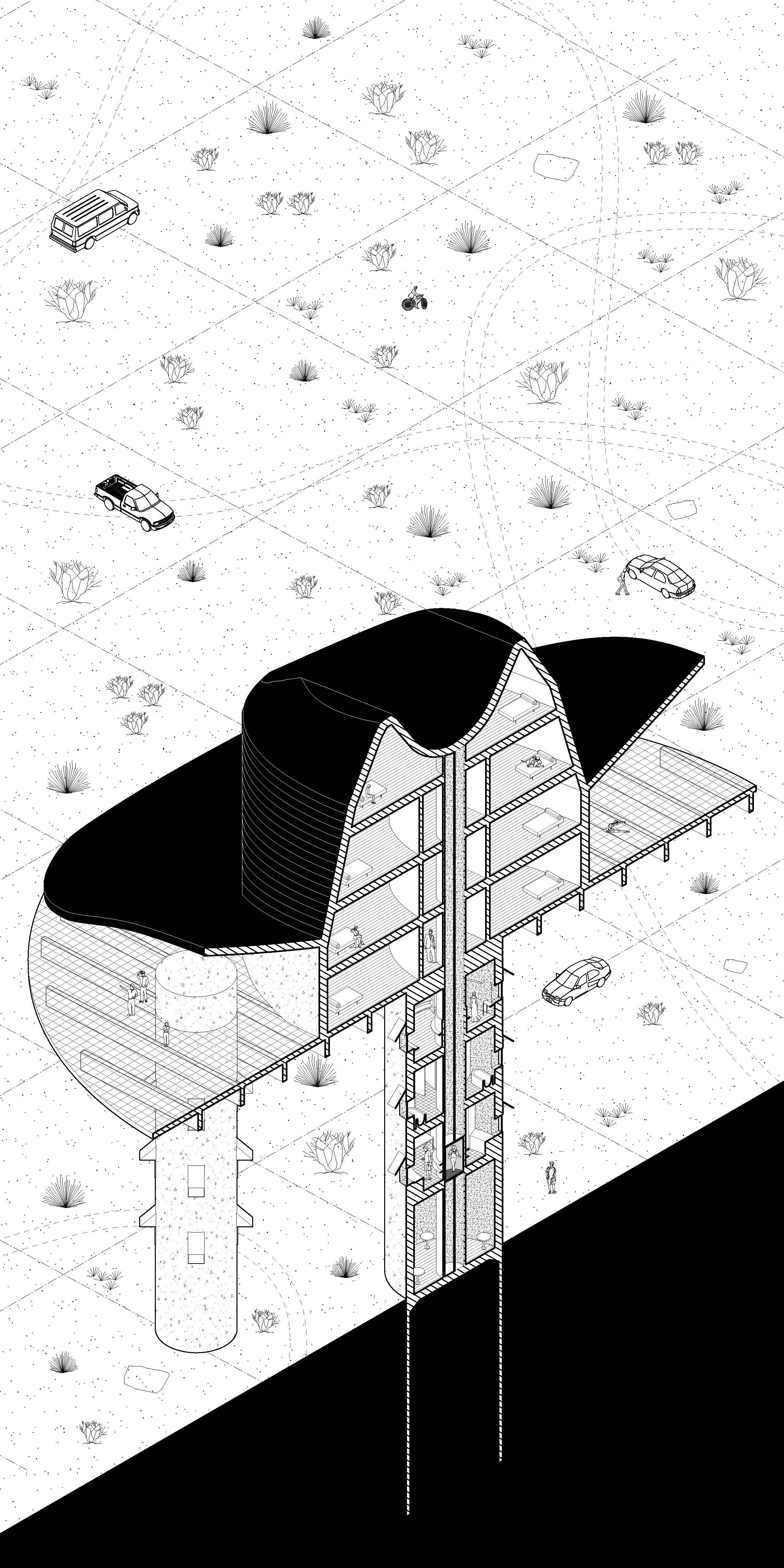




in contrast with their gaudy exteriors, the interiors of rhyolite’s follies house living program not traditionally associated with the signifying form of the structure. this nonchalant attitude of the living quarters makes one question their preconceived attitude towards the town & calls into question what a queer lifestyle is.
